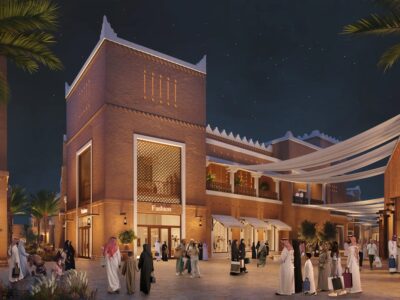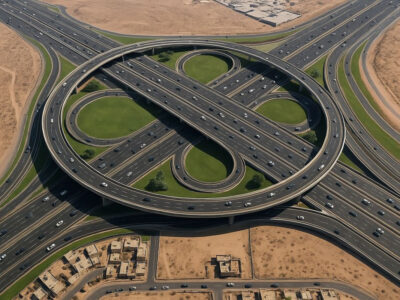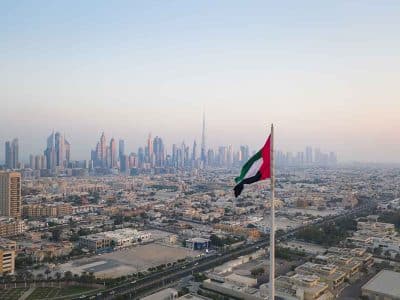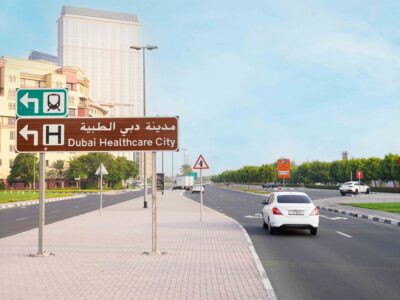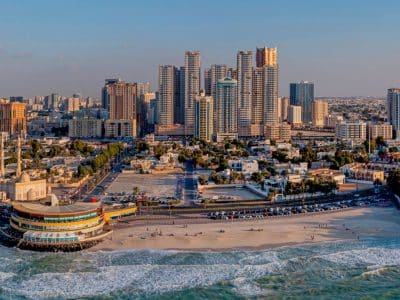Under construction since December 2005, the US $1.5 billion (AED5.5 billion) Atlantis, The Palm is beginning to take shape. The ocean-themed resort rising rapidly on the crescent of the Palm Jumeriah is set to be one of Dubai’s biggest tourist attractions. Developed by Kerzner International, Atlantis will feature a 172,000m
2
water park (the biggest in the region), an entertainment village including restaurants, retail facilities and a nightclub (set to be the biggest in Dubai), one of the largest open air marine habitats in the world with around 65,000 marine animals; and the imposing Royal Towers hotel, which, with the steel structure now complete, already cuts a commanding presence as it looms over the Palm from its position at the crest of the island.
With the November 2008 completion deadline rapidly approaching, Richard Lindsay, senior vice president, Kerzner International says the key to ensuring that a project of this scale remains on track is good organisation. A total of 7,200 labourers are involved in Atlantis and the operation runs 24 hours a day. Kerzner has retained control of the overall running of the project, making the decision to bring in its own management team and award individual contracts rather than one general construction contract.
“I guess the best way to describe it is a ‘bastardised construction management approach’,” says Lindsay. “We didn’t appoint a main contractor for the project. We decided there was really nobody who would be sufficiently solvent to do the whole thing. What we did was say, let’s get our own management team together to ensure that the coordination really happened.
“We have pulled it together, we have coordinated it, we have managed it, and it allows us to have a choice of contractors rather than putting all our eggs in one basket. If you give the project to one contractor you are dependent on them for progress, you are dependent on them for logistics, you are dependent on them for everything.”
Al Naboodah Laing O Rourke was awarded the vast majority of construction work for the Royal Towers and a large contract was awarded to BK Gulf for the mechanical elements, making up around 50-60% of the work. The rest of the packages have been awarded to specialist contractors.
In terms of the running and logistics of the site, Kerzner is responsible for everything ranging from temporary utilities, cranes and canteens to labour camps. Some of the labourers are housed in a ship moored off the coast of the Palm. But Lindsay insists that this was the best solution as it cuts down on the hours of travel time for workers having to go home to the mainland.
“The guys can finish work and in twenty minutes they are home, they can shower and eat. That was the logic behind doing it. The conditions down there are much better than some of the labour camps. There are 1,200-1,300 on the boat, that’s all we’re licensed to accommodate.”
The Royal Towers are beginning to resemble their final design. The four cores have risen and columns and beams have been erected to create the 18m-high domed grand lobby. Two 75-tonne steel trusses, extending over 42m connect the East and West of the towers to create the exclusive Bridge Suite. The hotel is scheduled for completion this coming summer but contractor Al Naboodah Laing O Rourke has cut down on valuable construction time with the use of prefabricated techniques, including prefabricated bathroom pods and precast concrete façade panels, which are manufactured in Jebel Ali by Emirates Precast.
“With the bathroom pods you just crane them up, you use a beam, and you slide them in on the floors and align them.
The time saving is significant. We have probably saved around two to three months,” says Lindsay. Each bathroom pod weighs 3.5 tonnes and consists of a marble sink, bathtub, shower, toilet, bidet, taps and tiling.
Lindsay says that prefab techniques have also allowed savings to be made in terms of manpower. “Using the precast panels has certainly reduced our dependency on labour. We have probably saved around 600-800 labourers on site. The panels just need to be hoisted up, and then a piece of kit can be used to slip them in where they fit. It’s very simplistic. We’re also able to maintain a great deal more quality control.”
A key feature of Atlantis will be The Ambassador Lagoon, a 13,500m
3
marine habitat, home to several hundred species of marine life, both local and international, including piranha fish, sharks and octopi, among others. The structure of the 10m-high open-air tank is complete and a mechanical service corridor, which runs for almost a kilometre from the conference centre through the Royal Towers and directly underneath the tank, is also complete. According to Lindsay, a major priority is ensuring that the marine life will be properly catered for.
“We have got marine guys on board full time, looking at the water quality and the fish types. There will be fish hospitals, fish laboratories, fish food preparation areas, and a rescuing centre for fish dumped on the beach,” adds Lindsay.
“We are working with the Ministry of Environment and Water, so we can share the data that we gather here with their data, so there’s a lot of background information. We’ll put the marine habitat in a year before we open and watch Mother Nature take over. We’re trying to create a real marine habitat.”
Lindsay insists that the strictest environmental standards have been adhered to throughout construction of the resort. “There was an environmental assessment carried out for the Palm, we tried to piggy back off it but we couldn’t as we have got our own unique uses and different water, with the chemicals that we’re using.”
Jebel Ali Free Zone Authority insisted that a separate Environmental Impact Assessment (EIA) was carried out specifically for Atlantis. “We have an environmental management plan where every quarter an independent assessor comes and checks our performance against the criteria that’s been laid out in the EIA. We had to go through that whole process; it was tough, because nobody does it here. From every perspective we were forced to comply with the highest international standards.”
Elsewhere on the site The Ziggurat temple is also structurally complete. The 30m-high focal point of the Aquaventure water park will feature seven slides including the ‘Leap of Faith’ – a 30m sheer vertical drop, which will catapult visitors through a clear acrylic tunnel into a shark filled lagoon. The outer rock detailing is now being placed. “The façade is polystyrene covered in concrete. Depending on the temperatures it will probably need to be redone around once every five or seven years,” says Lyndsay. Acrylic tunnels for the two shark tank rides and four acrylic viewing panels have also been placed. The thickest panel is 100-150cm thick. Panels are bonded together using a chemical compression system.
“The panels are the same colour as the water. When you’re at the top of Ziggurat Temple, you sit there and look down and that’s when you see the sharks. You don’t see the acrylic panels, you don’t even know they’re there; all you see is 25 sharks. You can hear people screaming as they come down from the other side of the park.”
Developer
Kerzner International
Contractors
Al Naboodah Laing O’Rourke (construction); ANLOR (concrete frames, precast external façade, bathroom pods) Royal Towers; BK-Gulf Rotary (MEP Aquaventure); Emirates Exteriors (concrete frame Aquaventure); LCL MiceKraftwork (guest rooms fit-out and corridors) Royal Towers; Septech Simon Hartley (process mechanical); Al Futtaim Engineering (elevators and permanent hoists); Al Futtaim Bodycote (testing services); Galadari Engineering Works (structural steelworks).
